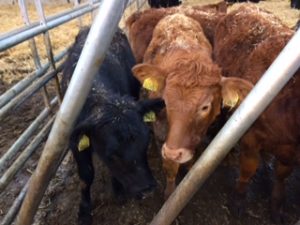Preventing Pneumonia In Housed Calves
16 March 2017 At this time of year, calves born inside are at risk of pneumonia. While pneumonia is a common occurrence, there are steps which can be taken to minimise the risk.
At this time of year, calves born inside are at risk of pneumonia. While pneumonia is a common occurrence, there are steps which can be taken to minimise the risk.
Vaccination can help reduce the spread of infection and clinical signs. For calves born inside some vaccinations can be given from 9 days of age. The best vaccination protocol will depend on the age of calves and the bacteria or viruses known to be a problem on your farm, so discuss the ideal programme with your vet.
Stress predisposes calves to pneumonia, particularly when lots of stressors occur at once. Although carrying out procedures like tagging, castration and disbudding at different times may be less convenient, it is likely to save time in the long run as fewer calves will require treatment.
Ensuring there is adequate stocking density and good ventilation will minimise the number of bacteria and viruses which present a challenge to the calf. More details can be found in the AHDB leaflet on Better Cattle Housing Design. For cows with calves at foot, the recommended area per cow and calf is 5 m2 for cows of 500 kg, and 6 m2 for cows over 600 kg.
In particular, avoid housing young calves alongside older calves, as the older calves are often immune, but can spread pathogens to younger calves ie group on calf age.
If cases of pneumonia do occur, early treatment is crucial to preventing long term damage to the lungs. Infected calves have the potential to spread the pathogens to other calves in the group, so consider isolating these calves and their mothers in a separate airspace.
Katrina Henderson, katrina.henderson@sac.co.uk
Sign up to the FAS newsletter
Receive updates on news, events and publications from Scotland’s Farm Advisory Service
